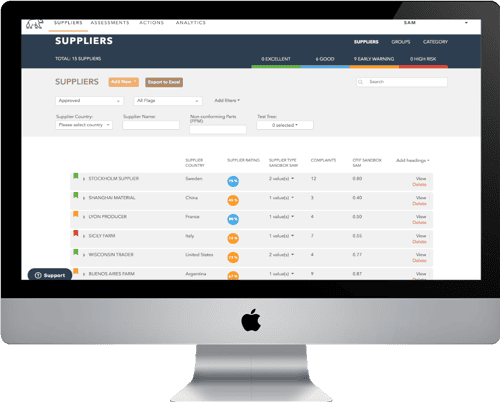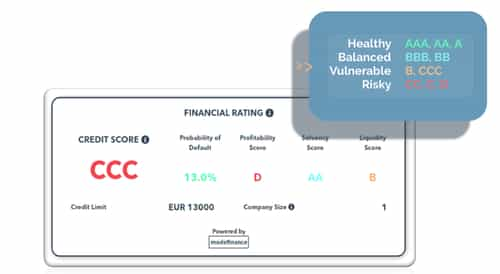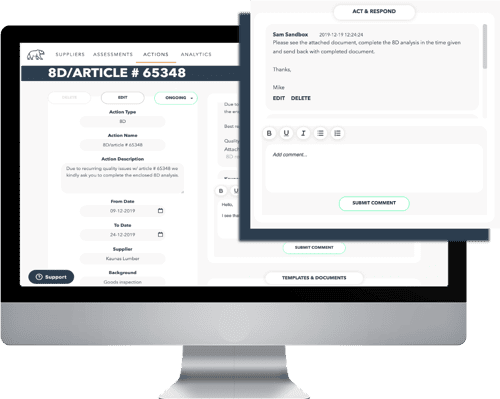Something I’ve learned from a very young age is that food and mealtimes are something to be cherished. For this reason, cooking was always a pastime that was held with high regard in our household. The family philosophy was, if you eat good, then you’ll feel good.
Grandma Garno’s meatballs, Grandpa Charlie’s Pasta e Fagioli, Grandma Helen’s kugel, and so many more family recipes were staple dishes that were seasoned with tradition and tasted like family history.
Over time I’ve had the opportunity to adopt these recipes; handwritten on the back-side of 1950’s newspaper scraps or in such faded ink that one can just barely see it reads ‘teaspoon’ not ‘tablespoon’. Cooking these recipes for friends and family today is a privilege, and often jolts fond childhood memories stimulated through my tastebuds.
The beauty of cooking these recipes is that they come with a baseline, a core, and a sense of stability, but they also leave room for interpretation. You can’t make spaghetti and meatballs without onion, garlic, canned tomatoes, ground beef, and a few other essential ingredients. But, one can’t evolve a pasta sauce without trying new things either. Tradition is important, but evolution is inevitable.
Whether you’re whipping up a pot of Sunday gravy or building strategy, process, and/or adopting new systems for Supplier Management, it’s important to identify your essential ingredients for success. Building a recipe for smooth supplier management requires a foundation, which you can build upon, experiment with, and eventually make your very own.
Kodiak Hub’s Family Recipe for Smooth Supplier Management
Strong Leadership
Leadership is always important, but increasingly important in times of crisis & uncertainty. In 2021, procurement organizations will require inspirational, innovative, and pragmatic leaders to ensure procurement excellence.
If procurement wants to be seen in the broader value chain as a value driver, rather than a cost saver, then it’s the Chief Procurement Officer that will need to take their place within the C-Suite, solidify and communicate the importance of the Procurement function.
Cementing strong leadership in the procurement function places someone who understands the value of harnessing supplier relationships and communicates that message vertically and horizontally in the organization. More on this in the article Early Technology Adoption Leads to Supply Chain Excellence
Transformation/Process Managers
Smart, smooth, safe & sustainable Supplier Management will require shifts in strategy, process & systems, and these kinds of foundational shifts require champions of change.
Transformation & process managers are master coordinators between top management, line managers, and project managers. They’re jugglers of expectations, aligners of needs, and often rather well-rounded in their categorical competency.
To make sure a supplier management strategy is properly aligned with the broader business strategy and adopted by the broader procurement organization then it’s important to have transformational & process leaders in place! Check out The Key to Procurement Digitalisation: People.
Sustainable Procurement Initiatives
Procurement is one of the sole functions in an organization that can truly implement and realizes quality and sustainability initiatives in the line; considering procurement’s ability to impact the global supply chain network at the supplier level.
Smooth supplier management in a modern business encompasses sustainable supplier management with growing external trends such as climate change, increasing global population, and emerging domestic/international legislation.
Supplier management should always be anchored in broader sustainability & responsible procurement initiatives. Deep dive into this topic in the post Responsible Sourcing: How to Make Sustainability Happen for Real
Supplier Segmentation
Centralized supplier, contract & spend control is difficult in any organization. But, as the complexity of a global supply network grows, so do the challenges associated with a growing supplier base; such as decreasing supply visibility, and increased supply chain risk.
Classification and segmentation of the supplier base is a necessary activity in order to know who you buy from, and why you buy from them. Top-performing procurement teams often have strong category expertise and have well-segmented supplier bases in order to power procurement agility.
There are plenty of segmentation methodologies & frameworks, but some of the most classic typifications are:
- Kraljic Matrix
- Spend: A, B, C
- Criticality
- Supplier Risk
- Innovation/Collaboration Capacity & Performance
- Customer Impact
Supplier Information Management — Database/Registry
As mentioned above, an important facet of smooth supplier management is knowing who you buy from, what you buy from them, how much you buy for, and why you buy from them.
Beginning with the most material parts of a buyer-supplier relationship (who, what, and how much), it’s important to have a solid registry, or database, of supplier information, data, documentation, certification, contracts, spend and more. This may mean you have to pack your bags and move out of spreadsheet city, but I assure you that you’ll like your new view atop a modern solution for SIM.

Having a solid supplier information management system simplifies supplier base segmentation, enhances data quality/governance, harmonizes processes, and increases team collaboration. Learn more on the 5 Benefits of Using Supplier Information Management Software
Streamlined Supply Chain Compliance
Building supply chain transparency and visibility aren’t easy, but adopting processes and systems for streamlined supply chain compliance can help you take the first step towards a more transparent supply chain network.
Document, data, and certification reporting from suppliers shouldn’t have to be difficult. There are a plethora of modern ProcureTech solutions available on the market (including Kodiak Hub) that can help to streamline onboarding and self-assessment activities, taking the busy work off of your procurement team to issue questionnaires, compile information, upload documents, and review responses. At the same time, suppliers are given more interactive UI/UX to complete compliance-based activities, making for a win-win scenario.
One of the secret ingredients to smooth supplier management is becoming more process-dependent and less people-dependent; removing as many opportunities as possible for overly manual work and/or human error.
Third-Party Intelligence
Don’t try to reinvent the wheel.
If you do, your competition will be sure to wave as they speed by you in their Ferrari.
It’s important that procurement practitioners and procurement technology vendors — alike — take advantage of the plethora of 3rd party intelligence tools/data sources available today.

Kodiak Hub’s solution gives users the opportunity to add on Financial, Social, Environmental, and Country risk insights. Also available in the Kodiak Hub solutions are modules that cover PEP, Company Sanctions, Company Blacklists, Adverse Media, and Media Monitoring intelligence.
Other 3rd party intelligence sources that exist on the market include natural catastrophe, IT security compliance, CO2 impact, GHG scores, Categorical Price indices, Categorical Risk indices, and more!
You’re not in this alone, that much is certain. Figure out what 3rd party intelligence sources are interesting for your supplier management, and apply accordingly.
Modern Performance Evaluation
Adopting solutions & frameworks for modern supplier performance evaluation will automate your ability to create procurement intelligence & data insights, based upon the criteria your organization has aligned upon to evaluate. There are 3 things you need in order to modernize supplier evaluation, and truly gain data-driven buyer insights, and those are as follows:
1. Clear KPIs / Supplier Evaluation Criteria (the What)
Example: Quality, Delivery/Supply Chain, Commercial, Innovation, Sustainability, Collaboration, etc.
2. Find the Right Data Sources (the Where)
Example: Stakeholder Feedback, Customer Feedback, Supplier Feedback, ERP data, etc.
3. Build Business Intelligence (the How?)
Example: Supplier Rating Methodology for historical & comparative measures, etc.
“Having a formalized system in place to track and evaluate supplier and vendor performance is essential to the smooth operation and profitability of your company” (Brown 2010).
This makes sense, considering about 65% of innovations are sourced through external suppliers and partners (ISM). This makes supplier and partner contributions to a business’s bottom-line very important. Check out how to do this efficiently in the post Effective Supplier Appraisal: Don't Leave it to Chance
Spend Analytics
In order to manage a supplier base smoothly and strategically, it’s important to have control over supplier spend.
More advanced capabilities within spend analytics provides you with better visibility into costs, risks, and opportunities. Some of the primary benefits we believe can result in smoother supplier management are:
- Management of categorical spend
- Identification of cost centers
- Improve supplier delivery performance
- Optimization of working capital (Sievo, 2019)
Supplier Collaboration Space
Smooth supplier management requires smooth supplier collaboration.
Kodiak Hub founded our company and launched our SRM solution in 2015 with a vision to help global procurement and sourcing teams to buy smarter, as we want to ensure our users have the means to drive collaboration and innovation with the best suppliers.
We see SRM as a stepping stone to transform the way buyers and suppliers do business in order to drive organizational development, enhance sustainable trade, create opportunities for top-line revenue growth and ensure positive global impact. Reaching your full potential as a procurement organization is impossible without leveraging the assets of your supply chain and the value/competency your suppliers have to offer.

Adopting common collaboration spaces between your procurement team and your suppliers allows you to have a direct line of communication, share/reposit important documentation, co-manage projects, address corrective actions, issue proposals, archive communication and so much more. Learn more on this in the article Why is Supplier Collaboration Important & Which Tools Should You Use
Cross-Application Integration
Data.
Love it or hate it, supplier data is one of the cornerstones to smooth supplier management. Just as important as the gathering, and storing of data, is the means to share/mirror that data amongst various solutions. This means that your digital procurement ecosystem should consist of solutions with open-API architectures that can easily transfer data back and forth with a relative cadence.
Focus on cross-application integration will also give your procurement organization the opportunity to work w/ best-of-breed, or point solution providers, as well as having a backbone of some of the heavier S2C, P2P & ERP solutions in place.
Bon Appétit!















